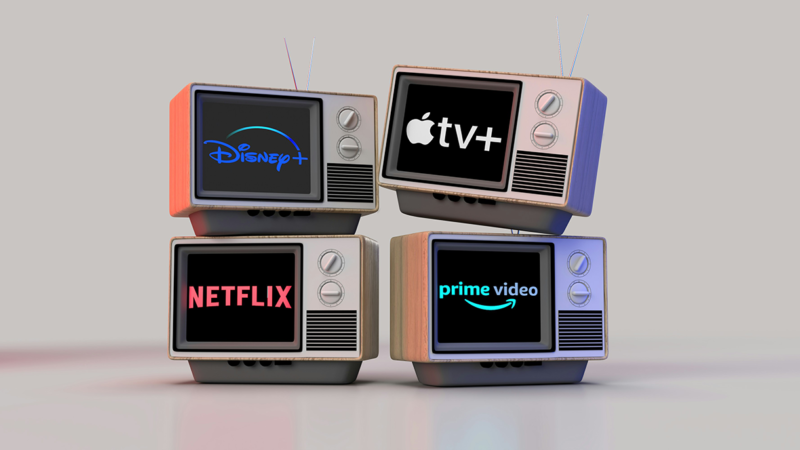
The entertainment landscape has undergone a seismic shift over the past decade, largely due to the rise of streaming services. Platforms like Netflix, Amazon Prime Video, Hulu, Disney+, and HBO Max have revolutionized how we consume film and television content. This transformation has affected not only viewers but also content creators, traditional media companies, and the very fabric of the industry. In this comprehensive article, we’ll explore the multifaceted impact of streaming services on the film and TV industry, including changes in consumer behavior, production trends, distribution models, and the challenges and opportunities that lie ahead.
The Rise of Streaming Services
A Brief History
The concept of streaming media isn’t entirely new. It began gaining traction in the early 2000s with platforms like YouTube and early versions of Netflix, which initially offered DVD rentals by mail before shifting to online streaming in 2007. However, it wasn’t until the 2010s that streaming became a dominant force, thanks to technological advancements, increased internet speeds, and the proliferation of smart devices.
Key Players
- Netflix: Pioneered the subscription-based streaming model and invested heavily in original content.
- Amazon Prime Video: Leveraged its massive e-commerce platform to offer streaming as part of its Prime membership.
- Hulu: Focused on next-day airing of TV shows and later expanded into original programming.
- Disney+: Capitalized on its vast library of content and franchises like Marvel and Star Wars.
- HBO Max: Combined HBO’s premium content with a broader range of shows and movies.
Changing Consumer Behavior
On-Demand Viewing
One of the most significant changes is the shift from scheduled programming to on-demand viewing. Consumers now have the freedom to watch what they want, when they want.
- Binge-Watching: Entire seasons are released at once, encouraging viewers to watch multiple episodes in one sitting.
- Personalization: Algorithms recommend content based on viewing history, tailoring the experience to individual preferences.
Cord-Cutting Trend
Traditional cable and satellite TV subscriptions are declining as more people opt for streaming services.
- Cost Savings: Streaming often provides a more affordable alternative to expensive cable packages.
- Content Variety: Access to international content and niche genres not typically available on cable.
Mobile Consumption
Smartphones and tablets have become popular devices for consuming media.
- Accessibility: Viewers can watch content anywhere, anytime.
- Short-Form Content: The rise of platforms like Quibi (though short-lived) attempted to capitalize on mobile viewing with bite-sized episodes.
Impact on Content Creation
Original Programming Boom
Streaming services have heavily invested in original content to attract and retain subscribers.
- Netflix Originals: Shows like Stranger Things, The Crown, and Bridgerton have become cultural phenomena.
- Diverse Storytelling: Greater opportunities for underrepresented voices and international productions.
Creative Freedom
Streaming platforms often provide more creative liberties compared to traditional networks.
- Flexible Formats: Episodes can vary in length; seasons aren’t constrained by traditional TV schedules.
- Risk-Taking: Willingness to invest in unconventional or experimental projects.
Competition and Quality
The race for subscribers has intensified competition, leading to higher production values.
- Big-Budget Productions: Streaming shows now rival blockbuster films in terms of budget and scope.
- Talent Attraction: Top-tier actors, directors, and writers are increasingly working with streaming services.
Disruption of Traditional Distribution Models
Theatrical Releases vs. Streaming
The line between theatrical releases and streaming premieres is blurring.
- Simultaneous Releases: Films like Wonder Woman 1984 and Black Widow were released in theaters and on streaming platforms concurrently.
- Shortened Theatrical Windows: The exclusive period movies spend in theaters before moving to streaming or DVD is decreasing.
Impact on Cinemas
Cinemas are facing challenges as streaming becomes more prevalent.
- Declining Attendance: Convenience and cost of streaming deter people from going to theaters.
- Evolving Business Models: Some theaters are exploring partnerships with streaming services or offering enhanced experiences like IMAX and 4D.
International Distribution
Streaming services have made content more globally accessible.
- Cross-Cultural Exchange: Shows like Money Heist (Spain) and Dark (Germany) have found international success.
- Localization: Subtitles and dubbing make it easier to reach wider audiences.
Challenges and Criticisms
Market Saturation
The abundance of streaming services leads to fragmentation.
- Subscription Fatigue: Consumers may be overwhelmed by the number of services and associated costs.
- Content Overload: Difficulty in discovering new content amidst a vast library.
Data Privacy Concerns
The use of algorithms raises questions about data usage.
- Personal Data: How streaming services collect and use viewing habits and personal information.
- Ethical Algorithms: Potential biases in content recommendations.
Impact on Traditional Media Jobs
The shift has implications for employment in traditional media sectors.
- Job Losses: Decline in cable subscriptions affects jobs in that industry.
- New Opportunities: Growth in streaming creates new roles in tech, marketing, and content creation.
Opportunities and The Future
Technological Innovations
Advancements that could further transform the industry.
- Virtual Reality (VR) and Augmented Reality (AR): Immersive viewing experiences.
- Interactive Content: Shows like Black Mirror: Bandersnatch allow viewers to make choices that affect the storyline.
Niche Streaming Services
Specialized platforms catering to specific interests.
- Genre-Specific Services: Platforms focused on horror, anime, documentaries, etc.
- Community Building: Fostering dedicated fan bases around niche content.
Global Expansion
Streaming services are investing in local content to grow internationally.
- Regional Productions: Creating content that resonates with local audiences.
- Collaborations: Partnering with local studios and creators.
Case Studies
Netflix’s Global Strategy
Netflix’s investment in international content has paid off.
- Success Stories: Squid Game (South Korea) became a global sensation.
- Localized Interfaces: Offering user interfaces in multiple languages.
Disney+’s Franchise Power
Leveraging well-known franchises to attract subscribers.
- Marvel and Star Wars Series: Exclusive shows like The Mandalorian and WandaVision.
- Family-Friendly Content: Strong appeal to households with children.
Consumer Tips
Managing Subscriptions
- Bundle Services: Some providers offer bundled packages at a discounted rate.
- Rotate Subscriptions: Subscribe to one or two services at a time and rotate to others periodically.
- Free Trials: Take advantage of trial periods to test services.
Maximizing Experience
- User Profiles: Use individual profiles for personalized recommendations.
- Content Discovery: Utilize recommendation features and explore different genres.
Conclusion
The advent of streaming services has undeniably reshaped the film and TV industry in profound ways. While it has democratized access to content and fostered a new era of creativity, it also presents challenges that stakeholders must navigate carefully. As technology continues to evolve, so too will the ways we create, distribute, and consume entertainment. The key for consumers, creators, and companies alike is to adapt and innovate in this dynamic landscape. The future of entertainment is streaming, and it promises to be an exciting journey for all involved.






